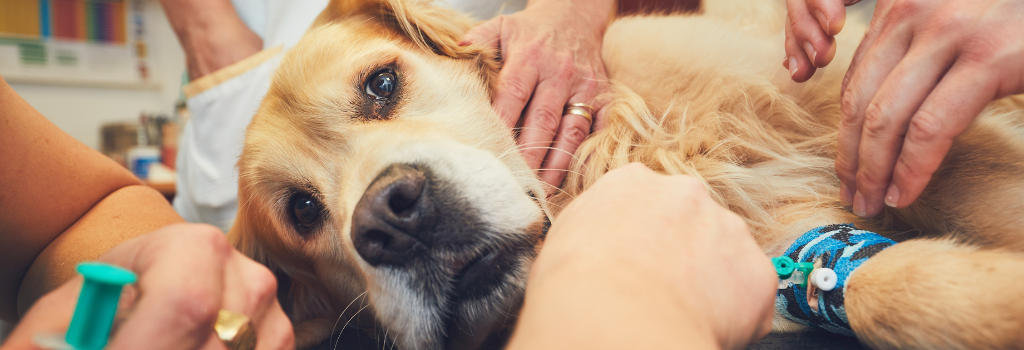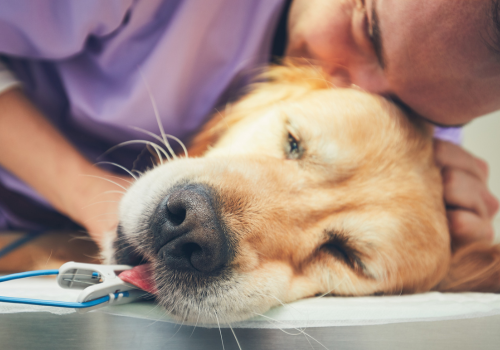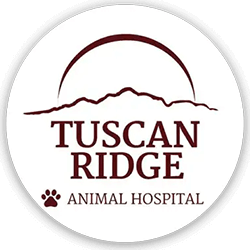At Tuscan Ridge Animal Hospital in Wake Forest, NC, our dedicated veterinary team is ready to provide expert emergency dog hospital care when your canine needs urgent attention. We offer fast diagnostics, critical treatment, and compassionate support during unexpected moments. As your trusted Wake Forest veterinarian, we’re committed to being there when your dog needs us the most.
The unfortunate truth is that if you own a dog, there’s a pretty good chance you will experience an emergency with that pet at one point or another. If you’re new to dog ownership, you may have even hopped online to find out what to do in case of emergency, and we commend you for doing your due diligence! At Tuscan Ridge Animal Hospital, we want to ensure that you’re getting the critical facts you need to keep your pet safe, especially when it comes to things like dog emergencies. To avoid misinformation you can find online from people who mean well but are not veterinarians, we’ve taken FAQs about dog emergencies and answered them as thoroughly and accurately as possible.
If you’re looking for a highly trained veterinarian in Wake Forest, NC, we’d love to see your dog for what you may consider an emergency, so please call us right away at (919) 556-1944.
What should I do if my dog is having an emergency?
You first have to know what counts as an emergency for your dog. Most veterinarians will define an emergency as anything that warrants immediate attention or medical care. If that care is not provided, then it could have dire consequences, such as loss of life or a much sicker animal in the future.
What constitutes an emergency in a dog?
There's a long list of what constitutes an emergency in your dog, and this list is by no means exhaustive. When I think about the cases that are most emergent, several things come to mind: being hit by a car, gunshot wounds, seizures (any lasting greater than two minutes), excessive bleeding from anywhere, whether from a wound, vomiting, or in the stool, and any breathing difficulty (e.g., excessive coughing, struggling to breathe, shallow breathing). Sudden collapse is a big one, including loss of consciousness or an inability to get up and move. Ingestion of a toxin, such as chocolate, grapes, onions, or toxic plants, also constitutes an emergency. Lastly, be aware of insect or animal bite wounds, like those from venomous snakes (copperheads are common in summer) or venomous spiders (e.g., brown recluse, black widow). We have lots of venomous creatures here in the South, so be on the lookout!
Dog emergencies include but are not limited to the following:
- Major traumas
- Fractures
- Car accidents
- Blood loss, whether internally or externally
- Ingestion of toxins
- Pregnancy issues
- Birthing issues
- Bloating
- Seizures
- Breathing issues
- Sudden collapse
- A neurologic event
- Tremors
Also, ocular issues should nearly always be considered an emergency, as the eye is very unforgiving. Ulcers or injuries to a dog’s eye or eyes can mean the affected eye may have to be removed, so time is of the essence.
What should pet owners do in the event of an emergency?
The first thing to do is recognize the signs that constitute emergencies based on the list I've provided. Aside from calling your veterinary hospital or veterinarian for professional guidance, ensure the animal is in a safe place. For example, if a pet is seizuring, avoid getting near their mouth to prevent bites, but try to move them away from dangerous areas, like the top of stairs. If it's a bite wound, remove your animal from the offending source. The most important action is to call a veterinarian, especially since many emergencies require extensive care beyond what a pet owner can provide at home. Emergency hospitals are open 24/7, so call them for guidance on managing the situation.
What diagnostic tests will be recommended for my pet during an emergency appointment?
The diagnostic tests that will be recommended for your pet during an emergency appointment will vary based on the type of emergency. They are generally directed by the findings of the physical exam and the history taken by the doctor about your pet. For instance, not all pets will need x-rays, but most dogs will need blood work. The problem list will guide the doctor's recommendation about what diagnostics or tests are needed to help work up that emergency situation.
What is the first thing a veterinarian will do when faced with an emergency?
The first thing to do when faced with an emergency is to assess whether or not the patient is stable. Oftentimes in an emergency situation, the patient may be shocky, losing blood, unconscious, or unable to stand or walk well. It can be upsetting to pet parents when their dog is taken away to the back room, similar to when we go to the emergency room and family members are asked to wait in an exam room. The nursing team needs to assess the stability of the patient, which takes precedence over even a full physical exam and history.
What happens when a pet arrives at the hospital during an emergency?
The response depends on the type of emergency. Diagnostics such as x-rays and blood work are often needed. One of the most crucial actions is placing a catheter in their arm and starting fluids, as many animals require critical supportive care due to shock or to help them through the crisis. In emergency situations, every minute counts, so contact your veterinarian as soon as possible to receive guidance and supportive care for your pet.
Do all pet emergencies require surgery?
Not all pet emergencies require surgery. Emergencies are categorized into either medical emergencies or surgical emergencies. The decision on whether an emergency is surgical is often based on findings from diagnostic testing like x-rays or an abdominal ultrasound. These tools can reveal issues like fractures, foreign body ingestion, abdominal bleeding, or fluid in the chest cavity. Many of these conditions would fall under the category of a surgical emergency.

What are some signs and symptoms that my dog might be experiencing an emergency?
There are many signs and symptoms that could indicate a canine emergency, so being aware of these is a critical part of responsible pet ownership.
Some signs and symptoms that your dog is experiencing an emergency are as follows:
- Sudden collapse
- Respiratory difficulties or distress
- Possibly open-mouth breathing (when they haven’t been doing anything to cause this, such as exercising)
- Seizures or tremors
- Diarrhea
- Vomiting, possibly with blood
- Broken bones
If the dog is bleeding externally, you and your veterinarian can see that, but what happens if the dog is bleeding internally? One good thing to get used to is checking the color of your dog's gums, as they should be just as pink as ours. If they’re not, that's telling you something. The dog may have ingested rat poison or even ruptured a splenic tumor, so checking the gums if you suspect something is wrong with your dog is a good idea.
Is it best to call an emergency hospital first before coming in?
Yes, it’s best to call whatever facility you’re bringing the dog to beforehand. If it’s after hours, call the emergency facility to give them a heads up that you’re coming. Depending on what their workload is at that given moment, it would be beneficial for them to have everything ready for what they might potentially treat. That way, the minute you walk in the doors, they're prepared for you. They have a table set up, heating pads, fluids, catheters, medications, anesthesia and they know whatever has to be done. They can get that ready to go in advance to save time and expedite the process.

Should I give my dog first aid at home, and what should I have in my first aid kit?
This is a loaded question for veterinarians, as you can do more harm than good. However, if it’s possible for you to administer first aid for a pressing issue, do it. As veterinarians, though, we have to ask—what is that going to look like? Blood loss is the most obvious thing that comes to mind, so if you have a dog that has received some sort of a laceration, or anything that would cause external blood loss, then go ahead and administer a bandage or wrap that area to keep pressure on it.
As a warning, though, remember that if a dog is in a traumatic situation, they are not in their normal state of mind. Even though you are their owner and they're very comfortable with you—if they're hurting, struggling to breathe, or in distress, they will react differently than they will on any other occasion. In other words, don't put yourself in harm’s way. If you can administer first aid safely, then do so, but if you think you may get bitten in the process, don’t try it. In that case, scoop the dog up, wrap them in a towel or blanket, put them in a carrier, and get to your veterinarian as soon as possible. We’re familiar with handling situations like that more than the average human.
The American Kennel Club (AKC) has an excellent list of items you might want to have in your first-aid kit for dogs.
How will a veterinarian treat my dog in an emergency?
In any canine emergency, the priority is to stabilize the dog. We're going to check their vitals. If the dog is dehydrated or has experienced blood loss, then we're going to stabilize that pet first, and what does that mean? We use an IV catheter and push IV fluids at a good rate. If they require oxygen, we get them on oxygen therapy immediately to stabilize. Once we get that dog stable (meaning their heart rate and breathing are steady and we're not at risk of losing them in the near future), then we start looking at diagnostics like blood work, x-rays, ultrasound, and whatever else we need to figure out what's going on.
Why is prompt treatment in an emergency so important for my dog’s health?
Well, it’s the very nature of an emergency—if we don’t handle it quickly, injury or death might occur. The dog must get treated sooner rather than later. If you're in doubt, call your veterinarian, tell them what's going on, and even send a video if you have to—whatever it takes to relay that information. It may very well turn out to be what your veterinarian doesn’t consider an emergency, but it’s best to err on the side of caution.
How do you perform CPR on a dog?
CPR for pets is very similar to what you can imagine in humans in the way that we give cardiac compressions over the thorax to help the heart pump. We'll give breaths. Then, after we intubate with a tube, we start some fluids to help perfusion and administer any emergency drugs the dog needs.
If you live in or near Wake Forest, NC, we’d love to care for your dog and better prepare you in case of an emergency. Please don’t hesitate to call us at (919) 556-1944 or email us at [email protected].
